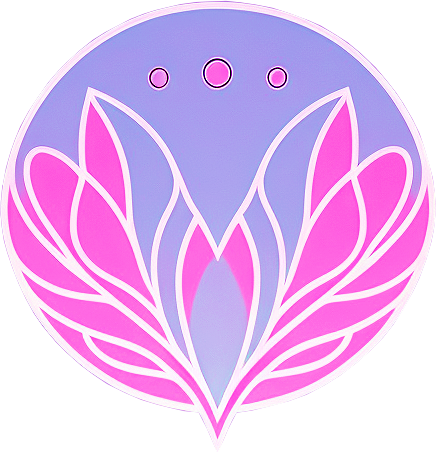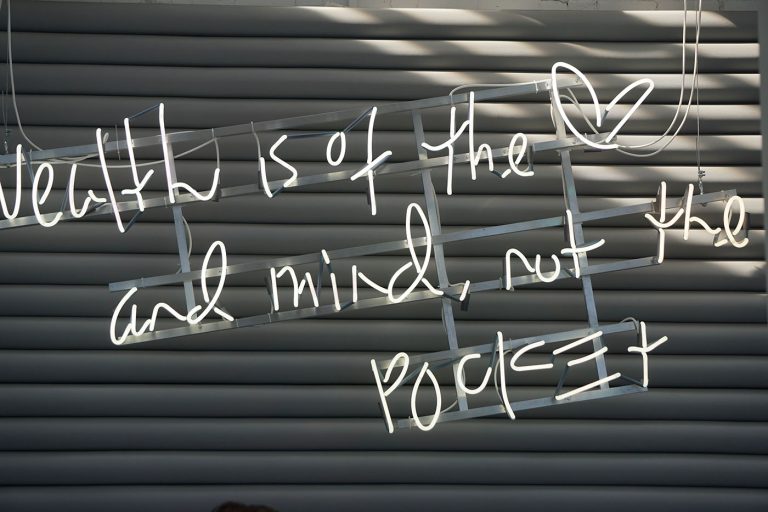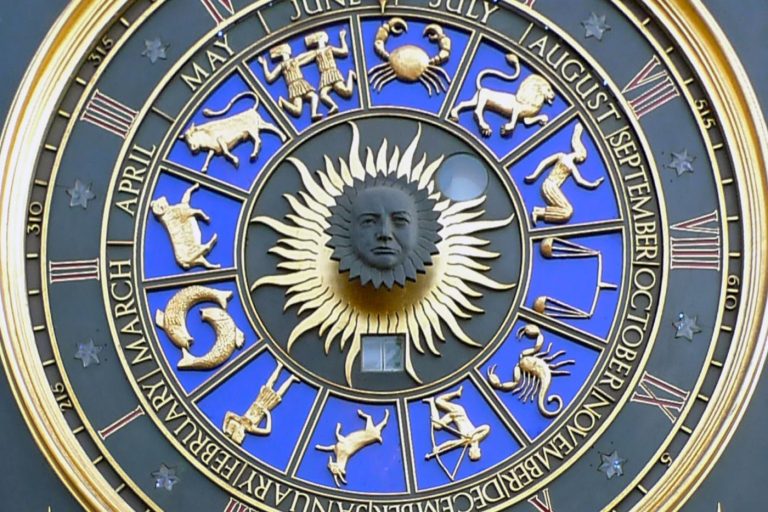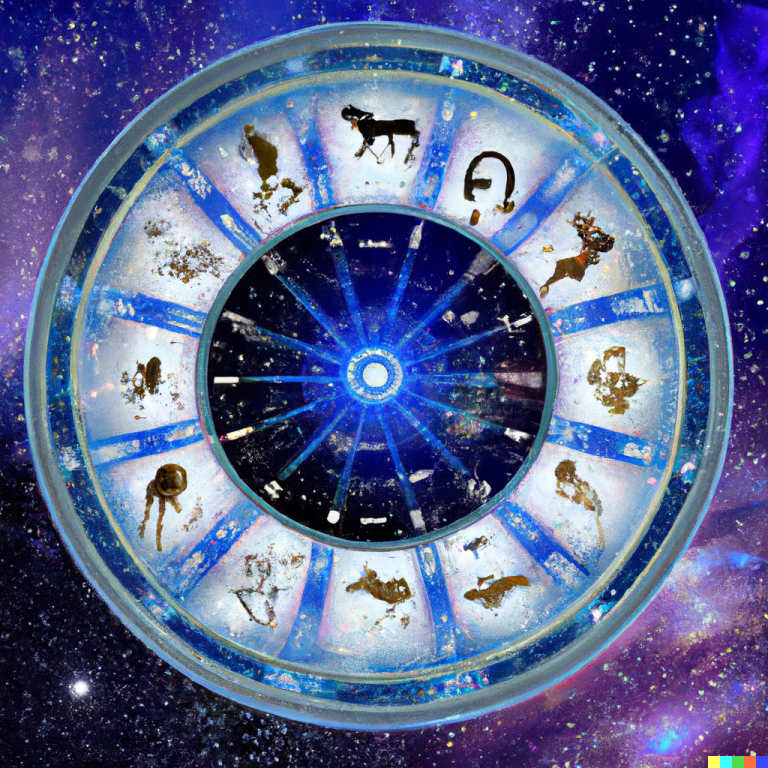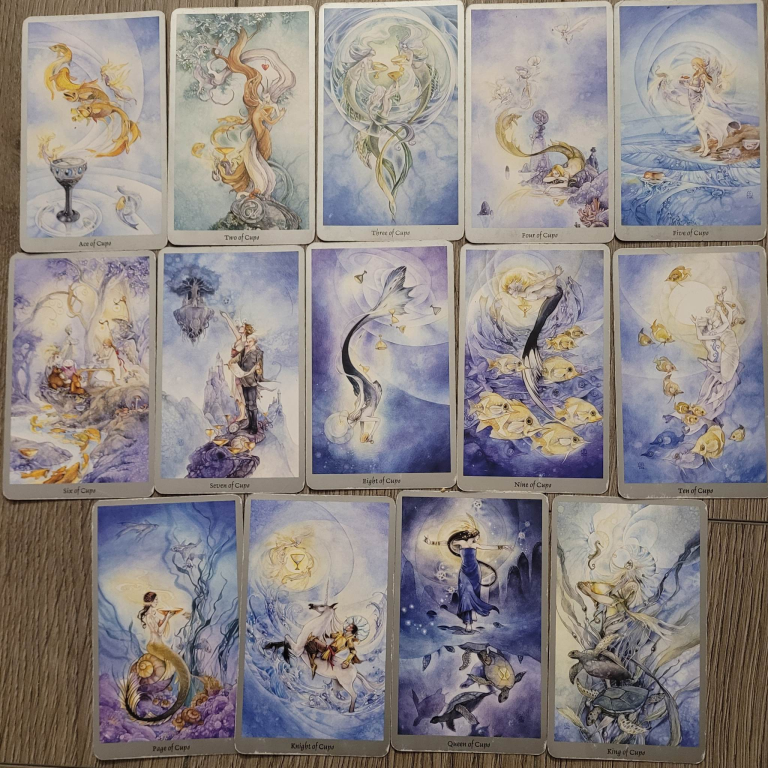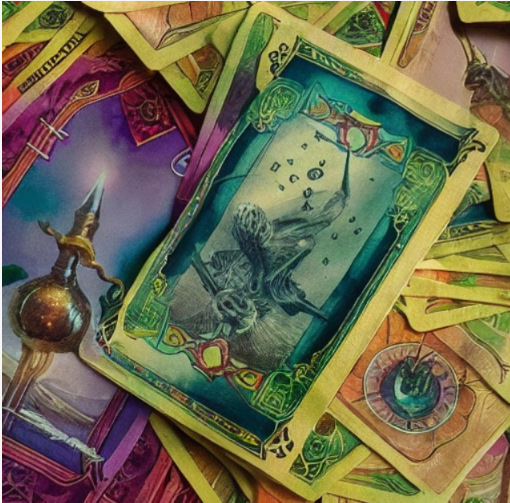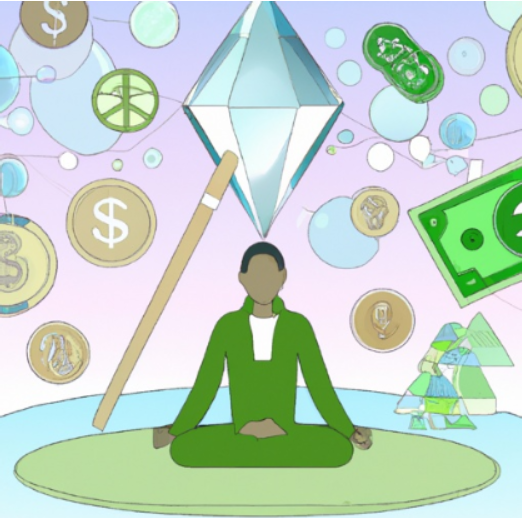Welcome to the mystical world of tarot! If you’ve ever been intrigued by the enigmatic images on tarot cards, or have found yourself pondering the meaning behind the mysterious Major Arcanas, then you’re in for a treat. Tarot reading is like embarking on a captivating journey, where each card holds a story waiting to be unraveled. And trust me, it’s not just for the fortune-tellers or the crystal ball gazers. With a little curiosity and a dash of humor, anyone can learn to read the Major Arcanas of tarot and tap into their profound wisdom.
Think of tarot as a cosmic game of “connect the dots” – but with a twist. Instead of numbers or alphabets, you’ll find a motley crew of archetypal characters, symbolic objects, and surreal scenes that will make your imagination run wild. From the enigmatic Fool who’s always up for an adventure, to the regal Empress who exudes maternal warmth, and the formidable Death who’s not as scary as you might think – the Major Arcanas are a cast of characters that are as fascinating as they are diverse.
But don’t let the gravity of the word “arcana” intimidate you! Sure, they may sound like a secret society with their own secret handshake, but fear not, we’ll be decoding their mysteries one card at a time. So grab your tarot deck, put on your thinking cap, and get ready to embark on a journey of self-discovery, intuition, and a little bit of laughter along the way.
Whether you’re a tarot newbie or a seasoned enthusiast, we’ll delve into the nuances of the Major Arcanas with a playful spirit and an open mind, because after all, who says divination can’t be fun? So let’s roll up our sleeves, shuffle the cards, and unlock the secrets of the Major Arcanas – tarot’s captivating cast of characters! Are you ready to join the adventure? Let’s dive in! So, without further ado, let’s unveil the hidden messages, profound symbolism, and timeless wisdom of the Major Arcanas.
In a traditional game, there are 22 so-called major arcana. The presence of major arcana in a draw signals a strong energy present to bring a teaching. Compared to the Minor Arcana, the Major Arcana represent energies that are less conducive to change. We will then think of values, or beliefs that are more deeply rooted in a person. It is more about something that defines a character, an act, an attitude, etc. Although no energy is immutable, a major arcana indicates the presence of more deeply rooted characteristics.
The easiest way to remember these arcanas and their meaning is by understanding their history and how that history actually relates to life. Numbered from 0 to 21, these cards tell the story of each individual as he sees himself confronted for the first time with the world around him.
This story is told via the adventures of the Fool. He begins his innocent and naive way of life and will be inclined to meet and confront different characters or forces throughout his journey in order to evolve and move forward in life.
0. The Fool
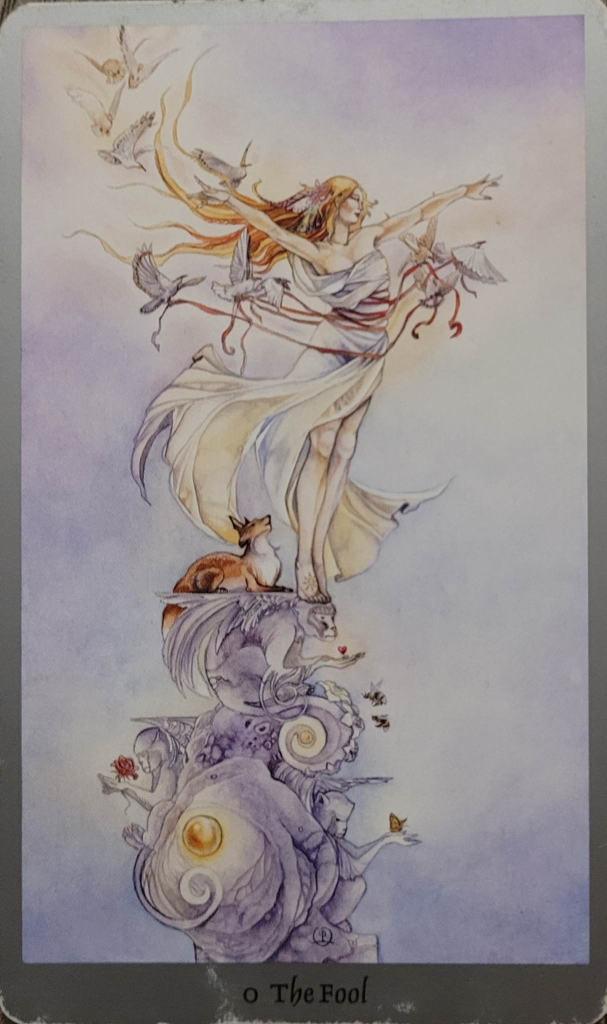
This first card represents the naive and innocent individual. When a person comes face to face with the world for the first time, they are devoid of life experience, solid values or convictions. He is a somewhat frivolous person who is enthusiastic about discovering new things.
This is a new beginning, a start from scratch. Although exciting, we must not forget that sometimes these people who face new beginnings are not always ready to commit or if they do, it is a bit out of naivety. It’s not necessarily bad, but depending on the case or the questions asked, it’s something to consider.
One of the first things an individual comes to notice is the act of creation itself. This act which created the world, life and the very individual. And it is this realization that leads the madman to make contact with a first spiritual being.
1. The Magician

The magician is the one who creates. It is an independent spiritual force, which advocates freedom, because in fact, it is itself free to create what it wants and as it sees fit. He is ageless and often assumes an assumed position that hints at his independence.
The magician is the creative force, he is enthusiastic about the future because he knows he can shape it in his image. As the first spiritual being that the Fool encounters, he teaches him that he is the only master of his destiny, that he alone can create the life he desires and that all the necessary resources are at his disposal…including his intuition.
In fact, one of the first things a new individual comes to realize is that he has an intuition, an inner compass that allows him to distinguish right from wrong, good from bad, what he can trust or not. It is therefore important for him to tame it and come to understand its functioning, to understand the signs that indicate whether a situation seems favorable or not. And that brings us to the next card. The Fool sees himself confronted for the first time with his intuition.
2. The High Priestess
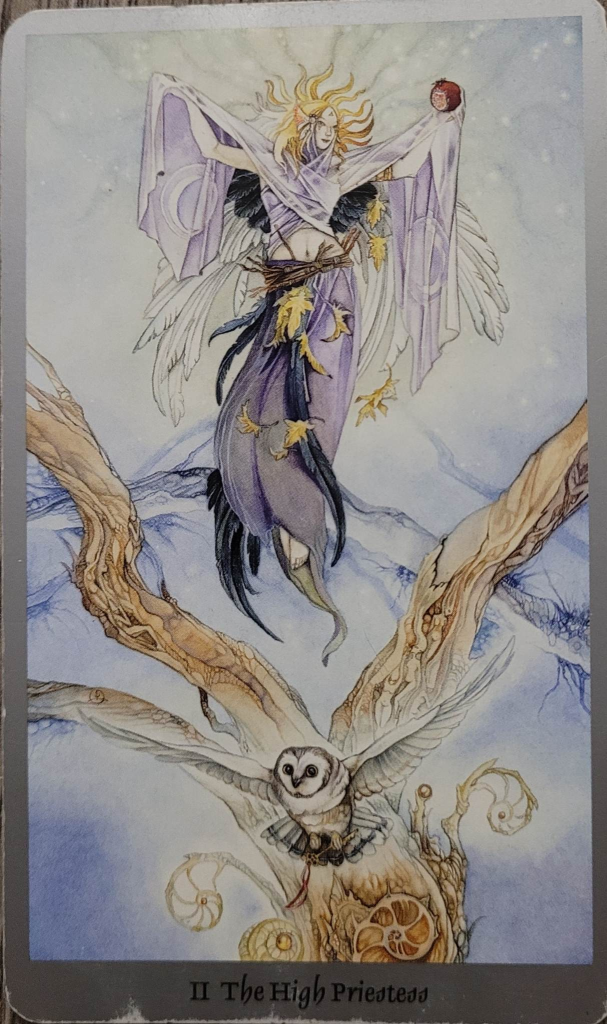
It is the card of intuition, of connection with the spiritual and the sacred. When it appears, it is a sign for the consultant to connect to his internal compass. The high priestess symbolizes the first contact of the madman with his intuition, the internal force that guides each individual during his existence.
Some are more aware of this than others, but we are all aware of having this inner voice speaking to us. Who pushes us to act or on the contrary, to move on. During his journey, the Fool realizes that he is guided in his path by his intuition and he connects for the first time with it. He learns to tame it and understand it. The high priestess embodies the being who is in perfect harmony with her spiritual consciousness. It guides the madman in his learning of his “lights”, but also in the way of using them. She is both guide and energy, both oracle and mentor.
It reminds the consultant, but also the Fool, that at the very beginning of his existence, he possesses a pure intuition, untainted by the biases of society and it is towards this version that each individual must aspire. Once aware of his own internal voice, the Fool is then ready to encounter a first terrestrial individual.
3. The Empress
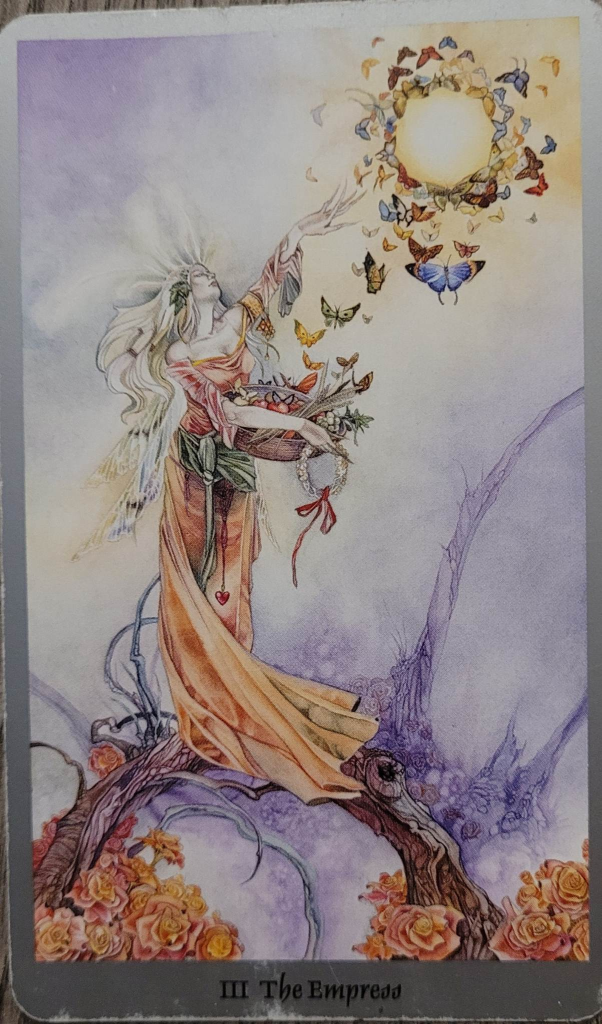
The empress is the mother figure of the individual. It is usually the first face a child sees when born. It is the protective force, but also the creative force of the individual, because it is the body of the mother that comes to create and bring it into the world.
The Empress is a nurturing and benevolent, even protective force. She represents calm and maternal security. She is the Fool’s mother, a resource person when he needs to be comforted. The Empress is often embodied as a tangible person in the draw, an expectant mother, mother, or someone with comforting motherly energy. It can also represent the birth of something new, an idea, a project, a relationship.
She is the creative force and embodiment of Mother Nature. She encourages the Fool to spend time with nature in order to be in harmony with it and to understand it, because to be in symbiosis with the world around us is to be able to integrate and evolve together with the Universe.
After meeting his mother, the Fool now turns to his second parent: his father.
4. The Emperor
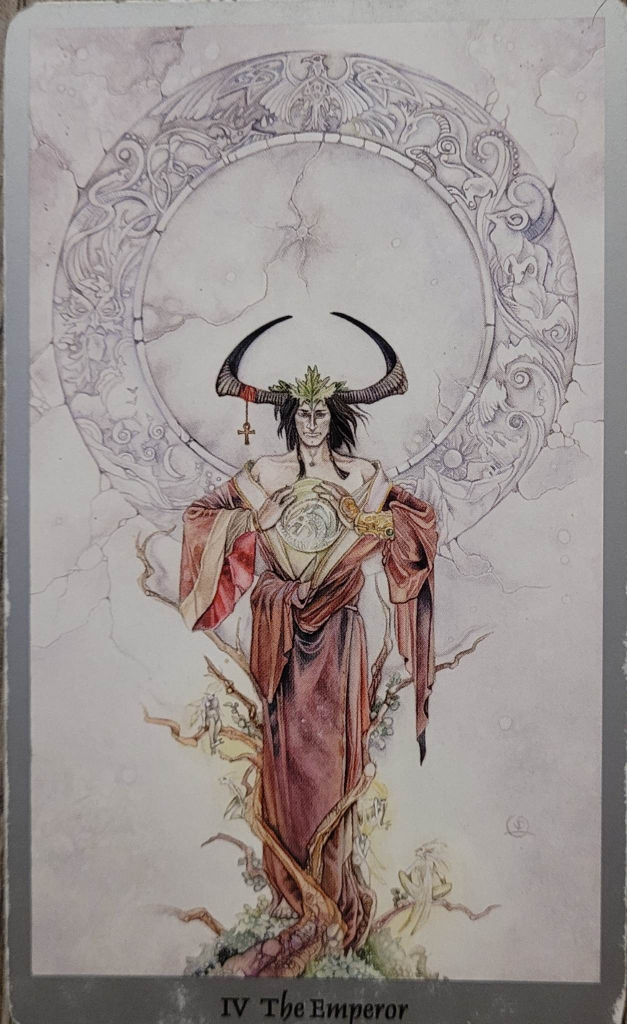
If the empress is the mother figure, the emperor is the father figure. He is authority, stability, but also wisdom. Its role is to teach the Fool lessons using his own past experience. It embodies responsibility and certainty. Like the Empress, he is a reassuring figure, on whom the Fool knows he can count.
This is a person who has sure and well-established values and who will never change his face. It represents a pillar of stability for the bishop. The emperor is the one who teaches the Fool discipline and the art of rationality. Although he is a leading figure, his primary purpose is to act for the greater good of all and with compassion. He therefore instills in the Fool not only discipline, but also the honor and importance of creating a plan of action and following it to ensure the completion of his goals.
However, the Fool will not learn all the basic lessons of the Emperor’s life. Just like everyone’s father, the emperor alone cannot teach his child all the principles of life. For that he will have to meet another character.
5. The Hierophant
This character represents the concept of rules. It is the daily routine, the one that has been present since the dawn of time and that transmits from generation to generation the ways of doing and behaving.
He therefore transmits to the Fool the notion of routine and repetition. He teaches her the importance of rules and following them. In society, every individual must conform to a so-called acceptable standard and this is what the Hierophant teaches the Fool. However, he does not teach him the notion of independence and therefore, when the pope appears in a draw, it must be seen as a well-established routine, a repetition, deeply integrated values, but not necessarily a desire to escape them.
Indeed, the Hierophant is an ancient being, whose values go back a very long time. He is not at a stage where he is ready to change his habits. In fact, it’s not that he doesn’t necessarily want one, it’s that he’s been anchored in his routine for so long that he wouldn’t know how to adopt another one.
He understood what works well for him and what allows him to evolve in a stable and predictable way. Is it good, or bad? Only the rest of the journey will teach the Fool.
6. The Lovers

Now that the Fool has acquired the basic notions to survive in the world, he meets for the first time someone another person like him, a life partner…or at least a person he judges to have potential for be his life partner. The lover represents the choice of each individual to ally or not with others.
It represents sentimental choice, but also hesitation. At this stage, the Fool is no longer the naive individual from the beginning, he now has values, principles, preferences and all this leads him to wonder with whom he can ally himself. To arrive at a decision, he will have to trust his intuition and his observations, his values and also his choice to embark on the creation of a story or not. Only he is the master of his destiny and he must decide.
It doesn’t have to be a romantic relationship, because there are many types of partnership and the madman will be faced with this kind of decision throughout his life.
If he is currently faced with the choice of whether or not to accept a new partner, he will have to constantly decide each time he meets a new individual whether he wishes to make him a life partner, a work partner or a friend.
7. The Chariot
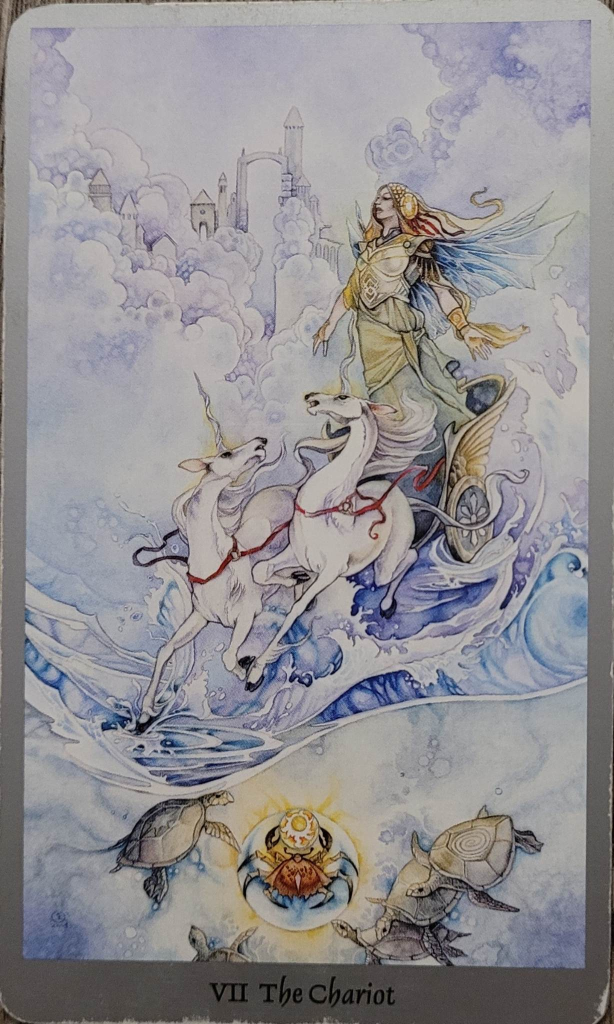
This card is the logical continuation of the journey. No matter the decision, the Fool must keep moving forward. Does he do it with a partner or alone? This choice is his alone, but sooner or later he must continue. He has to find the courage and the determination to move forward and he does.
He is confident in his decision and heads towards his future with the wind in his hair. The Fool has just discovered confidence in himself and in his choices. He knows what he desires…or at least what he desires at that moment. After facing his first decision, he knows he has what it takes to persevere and keep going. He therefore looks the rest of the way in the face and advances without fear.
Like the charioteer, the Fool has no doubts about what he has just chosen. He doesn’t look back and wonder what would have happened if he had come to a different conclusion.
However, the Fool does not yet have this notion of questioning. This, he will begin to learn with the encounter of another force that regulates the Universe.
8. The Strenght
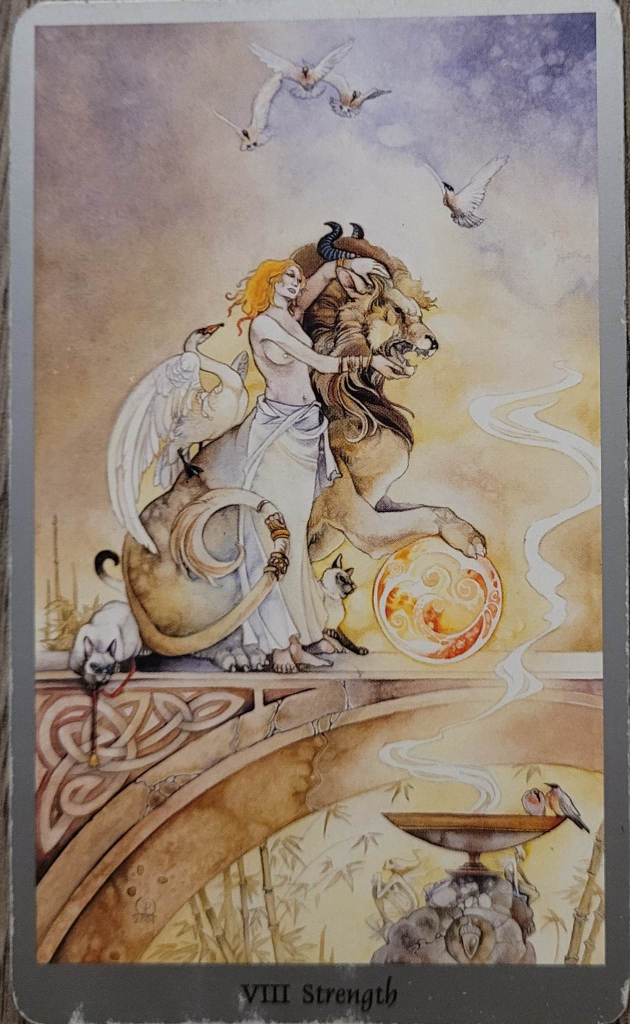
Armed with these new achievements, the Fool resumes his quest, stronger and more determined than ever. He is aware of his inner strength and the power of his convictions. More than ever, he knows that he is able to achieve his goals and he will not stop until he has achieved them. The Fool is certain that he has the capacity to accomplish what he wants if he manages to put the necessary effort into it.
Strength is also what pushes the individual to persevere in the most difficult times and to act even when the situation is not comfortable. As the Fool has also discovered previously, there may be times when certain opportunities or occasions are more difficult to seize or escape, as she takes him out of his comfort zone. Strength is what the Hierophant lacks to get out of his reassuring routine.
This new strength of character, however, comes with its share of warnings. By dint of determination, it is possible to impose too much pressure on yourself or even to abuse this new power.
The Fool is also about to learn that going for it is not always the best solution and does not necessarily ensure instant results.
9. The Hermit
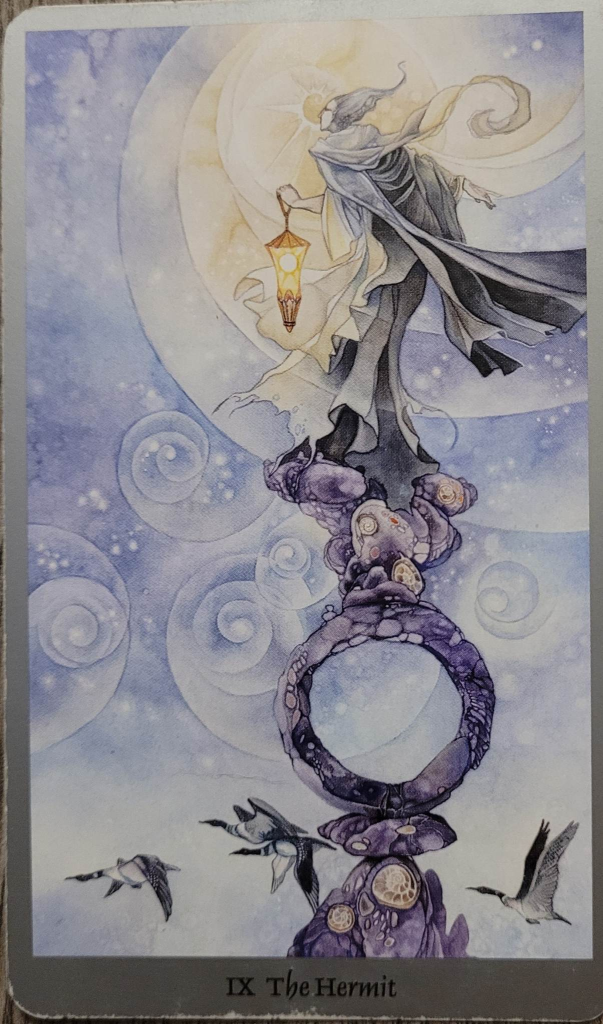
Halted in his race by justice, the Fool meets the Hermit who pushes him to enter a period of introspection and isolation. Did he make the right decision? Did he do well? What are the next steps for him?
The Hermit teaches the Fool patience, but also the virtue of learning and shows him the advantages of maturity. Getting ahead in life is an asset, but sometimes you have to know how to stop and think. However, the Fool realizes that the Hermit is wise, but unhappy. He suffers from his excessive isolation. He then learns the limits of introspection. By dint of moving away from the world, the Hermit has become slow and no longer realizes the passing of life.
The Fool comes to learn that knowledge and wisdom are essential to making informed decisions, but these also have their limits. Because isolating yourself from the rest of the Universe is not a long-term solution, but rather a necessity to be used sparingly.
For as the Fool is about to discover, there is no escaping his problems and isolation and avoidance are not modes of resolution.
10. The Wheel of Fortune
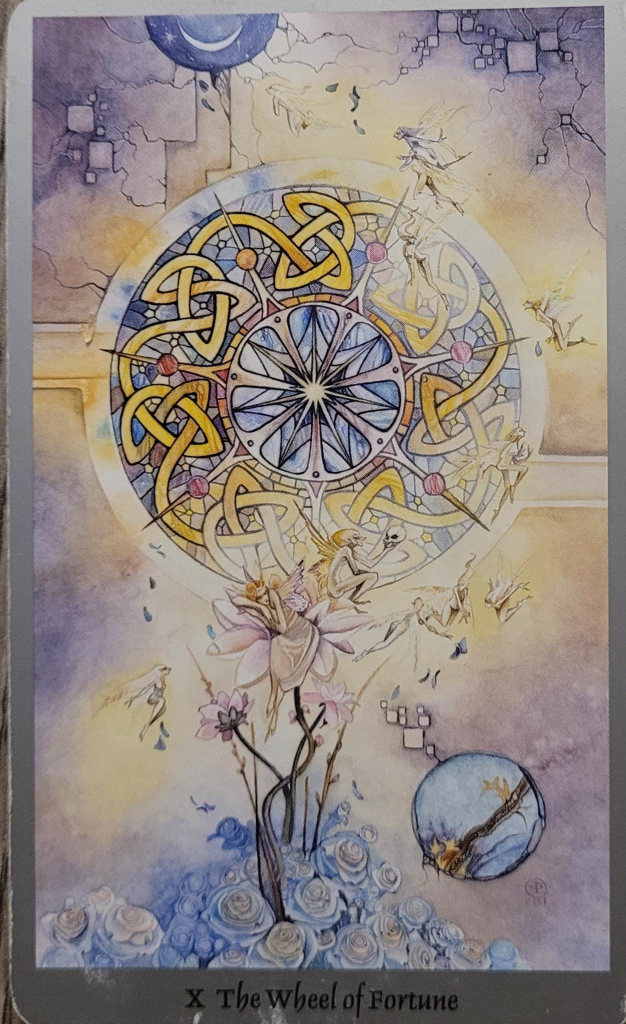
This realization and this new learning cause the Fool to reflect on life itself. This life that passes and turns constantly, stopping for no one. The wheel of fortune and a representation of this endless cycle and a metaphor for karma. Everything we put in the Universe ends up coming back to us. If Justice represents this notion that the Universe tends to find a balance, the wheel of fortune represents this return to the sender.
Life is full of opportunities you just have to learn to seize them at the right time. The Fool is then led to ask himself what is really important to him. What exactly does he want to do? What opportunities does he want to seize? How can he act to achieve this. The wheel keeps turning and never stops for anyone and the Fool has just realized this and he is determined not to let anything pass.
It is also a reminder to the Fool that nothing is permanent or unchanging. Hence the importance of seizing the moment when it comes or persevering when things do not turn out the way you want.
However, as the Fool will soon discover, some things are easier said than done.
11. The Justice
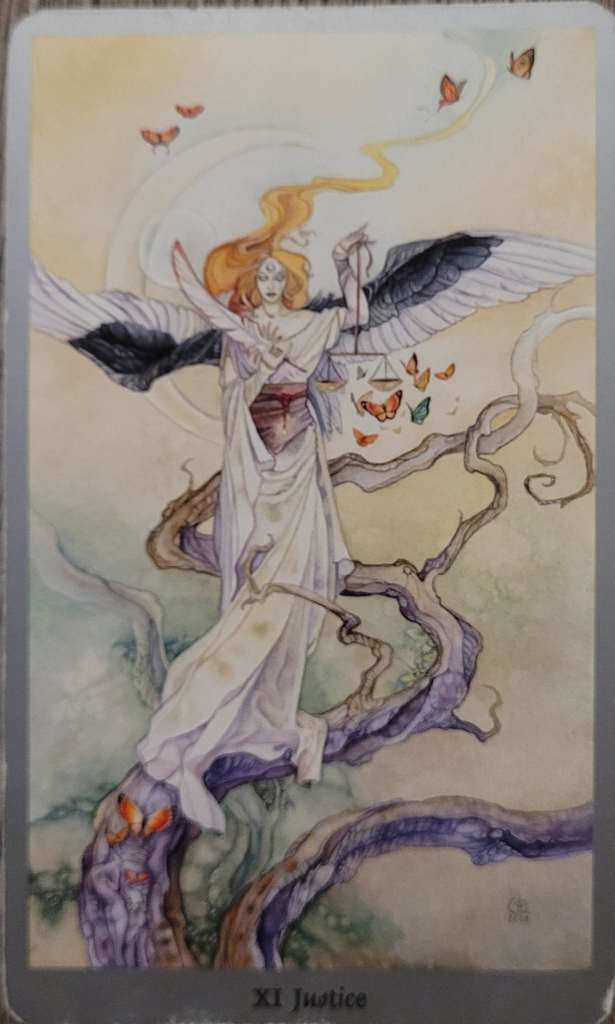
However, on his way, the Fool meets justice. This impartial force that maintains the balance of the Universe and reminds the Fool that all decisions have consequences. Therefore, it is important to keep a balance between everything, whether physical or spiritual.
Justice has no personal preference, it does not take sides, it is the simple reminder to the fool full of courage and confidence not to forget this founding principle of the Universe which is balance. She reminds the madman of the importance of sometimes having to take a break in order to evaluate his decisions. All is not white or black in life and she teaches the Fool the importance of acting with honesty and integrity.
She is also the embodiment of karma, as every action comes to impact not only the one who takes it, but also the world around her.
After the chariot’s freedom and confidence, Justice teaches the Fool the nuances and subtleties surrounding each decision and its consequences.
12. The Hanged Man
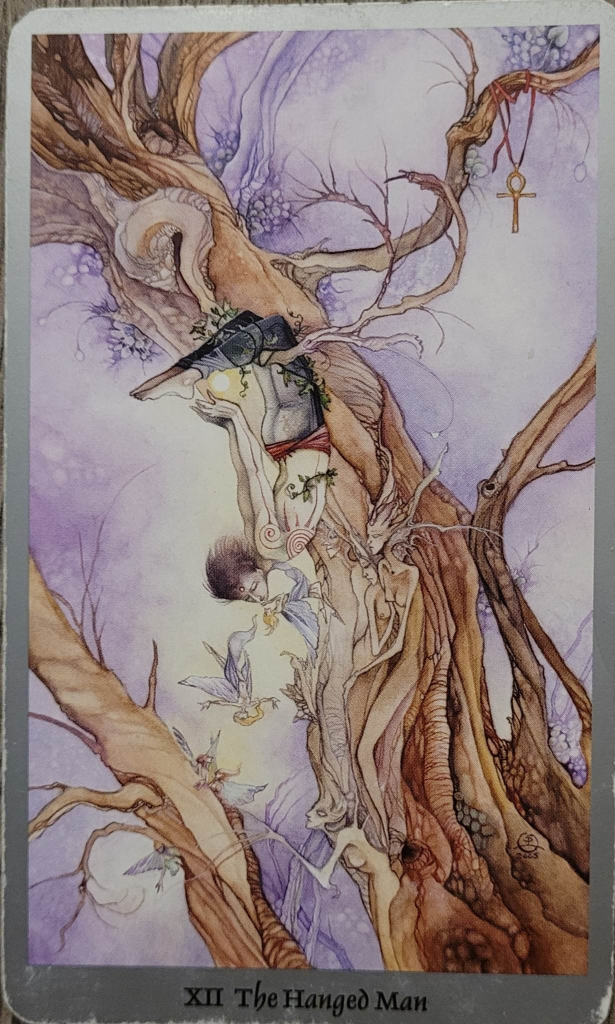
The hanged man symbolizes the first real obstacle encountered by the madman. Determined as he is, he realizes that some of his goals take time to achieve. This card symbolizes the waiting time that the Fool will meet to see his dreams and goals come to fruition.
This is a period of questioning for the fool. Will he actually end up succeeding in doing what he wants? Why are things going like this? For the first time, the Fool asks questions about the meaning of things and their reason for being. He saw disappointments for the first time and found himself faced with difficult choices. Should he continue or give up? Where is the line between perseverance and relentlessness? Between passion and obsession?
This waiting time also leads him to understand the notion of compromise. Sometimes it happens that in order to get things done and get out of this period of suspension, certain concessions must be made and he may even have to abandon some projects or ideas.
13. Death

The Fool finds himself faced with the end of certain things. Obviously, not all projects can necessarily last or come to fruition. However, this is not the end of everything. Quite the contrary. The Fool realizes that although admitting that some things are not meant to happen, it can lead to other paths that may turn out to be even better.
The Fool takes this as an opportunity to start over, renew and modify his goals. He must be careful, however, because sometimes there is a fine line between developing a tendency to self-sabotage and a tendency to resilience. The Fool realizes that just because something ends or doesn’t work doesn’t mean it’s the end. This is actually an opportunity for renewal.
When an element comes out of our life, this void creates space for a new opportunity. It is sometimes essential to put an end to what no longer serves us or what slows us down in order to access a higher level.
If death teaches this to the Fool, it is the next stage of his journey that will teach him how he must go about beginning this new period of renewal.
14. The Temperance
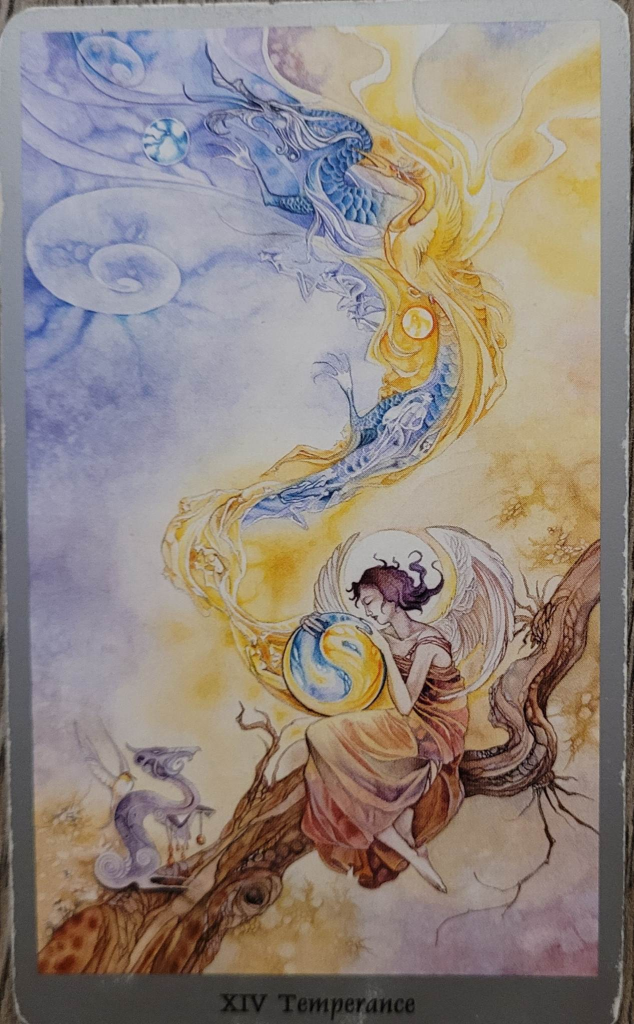
Now that the Fool has convinced himself that death is not the end, he must start circulating his energy again. He must take action. However, past mistakes are not always so quickly forgotten.
So he takes his time to make sure he gets it right this time. Having already learned patience and questioning with the hanged man, it’s more about wanting to take it slow to avoid another failure. In fact, the Fool wants to regain this balance, this assurance that he slightly lost when he found himself faced with the end of a project or an idea that was close to his heart.
He is not yet ready to dive 100% in new things. He observes and wants to make sure that his energy is totally rebalanced before really choosing a new definitive direction.
It also brings him to a period of questioning. In fact, what does he really want? What is essential for him and what is less so? The character he is about to meet will have the mission of offering him the answers to these questions.
15. The Devil
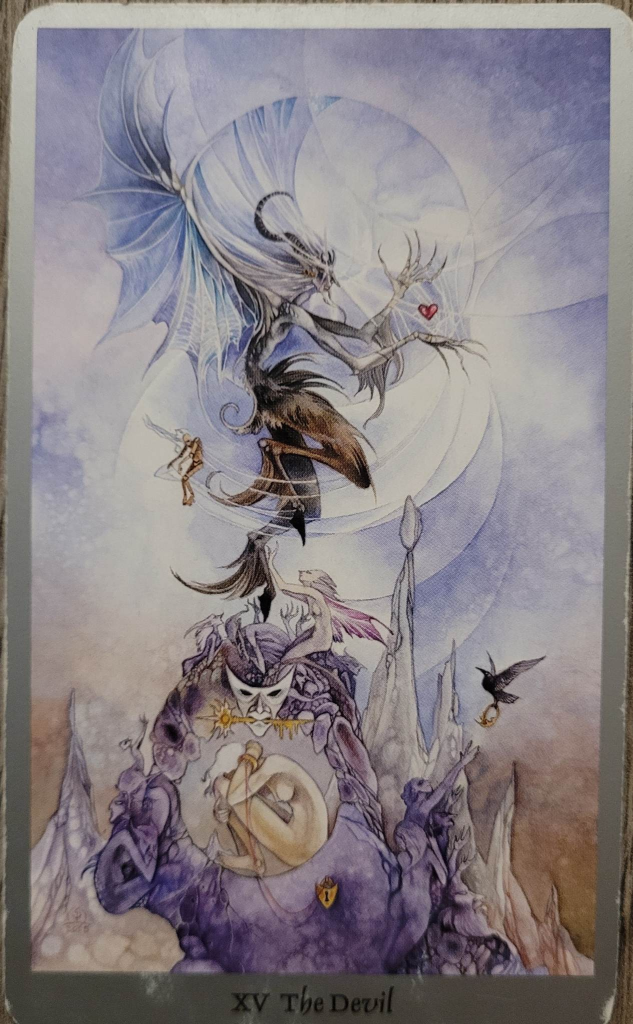
After having experienced past disappointments, the Fool wants to make sure that he does not experience the same things again. He encounters the Devil on his way, who teaches him the importance of material and carnal pleasures and to enjoy these pleasures while they are present. The Devil is not only negative, because he also teaches the Fool how to express his emotions, his needs and his desires in order to avoid future disappointments.
It helps him connect to his deep instincts and needs so he can identify how to seek and achieve happiness. Skilled speaker and negotiator, the Devil teaches the Fool the art of communication and asserting his desires. He makes him realize what he really needs to be satisfied and how he should go about ensuring that these needs are met. The Fool must however resist the temptation to resort to manipulation and lies to achieve his ends. There is sometimes a thin line between asserting one’s desires and coming up with unsavory means to achieve them.
Because if the Devil has the possibility of encouraging the Fool to move forward by defining his limits and adopting behaviors that will allow him to achieve satisfactory results, he also has the possibility of destroying.
16. The Tower
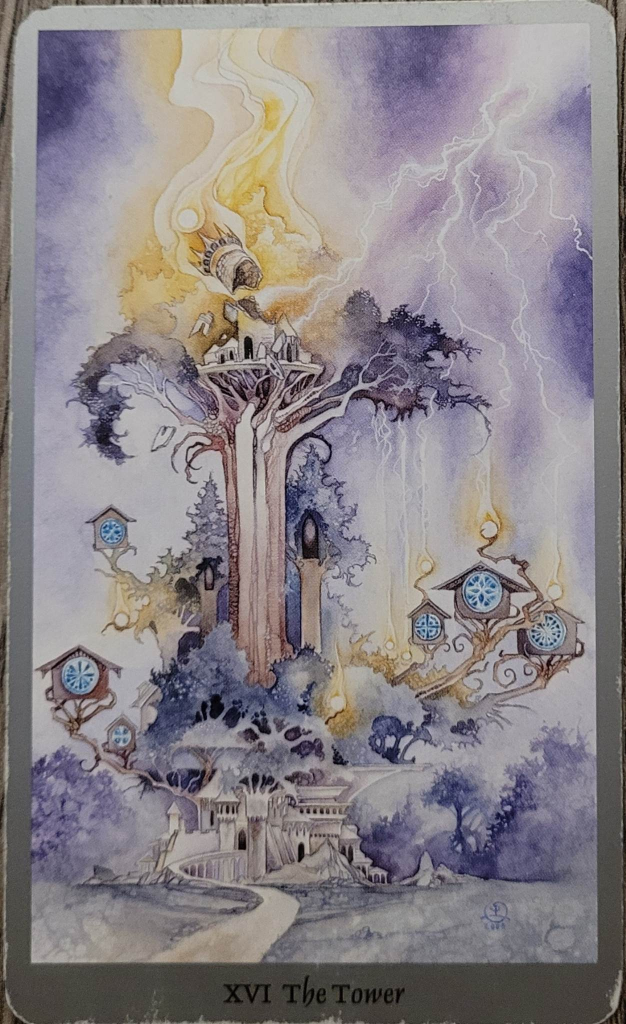
Aware of his desires and needs following his encounter with the Devil, the Fool now has the tools to make the necessary changes in his life. He now knows what he must do to be happy and at peace. He is also aware of what is realistic and what is not, which helps him set appropriate goals.
The tower is a symbol of change, but of profound change. It is the realization that something is wrong or, on the contrary, that something is worth pursuing. It is a return to reality that allows the Fool to start off on the right foot in order to build a new solid reality adapted to his needs and desires.
The tower can also occur when the Universe decides to take matters into its own hands. If we fail to take the appropriate actions to grow and meet our needs, then sometimes the Universe takes care of it and it can be brutal.
It is therefore advisable to act like the Fool who retains the lessons necessary to bring about profound change himself on his own terms.
17. The Star
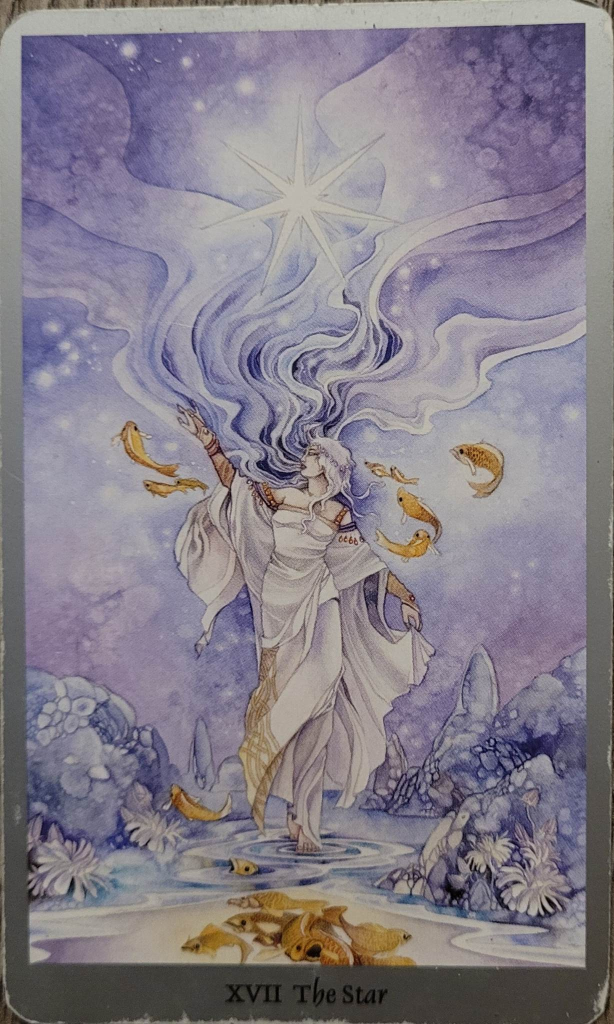
Following the changes made in his life, the Fool perceives the light at the end of the tunnel, and this light is symbolized by the star card. It is the hope for a better life, a benevolent light that lets the Fool knows that he is on the right path.
The Fool feels through his intuition that the changes he made were the right ones and that he is now building something in his image, something that represents him. He lets himself be guided by his inner compass to continue to pave his way towards a new peace.
When the star appears, it is a sign that the path taken is the right one and that you must continue in a similar direction. The star symbolizes an eventual return to happiness and to a situation that is much more satisfying.
The Fool has now found his common thread and it is with renewed faith in himself and in the Universe that he continues his quest towards the realization of his dreams and goals.
18. The Moon
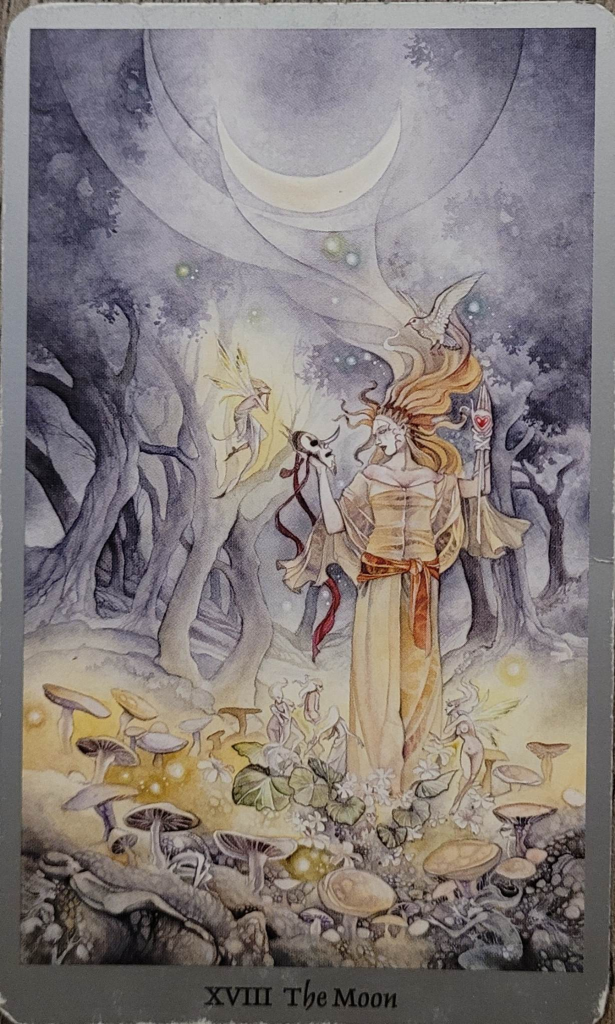
While the star is a light in the night, the moon is the light that guides the footsteps of the Fool in the darkness. Being only human, he cannot help feeling doubts, replaying his past failures and hesitating on his future path. The moon represents doubts, but also the light that illuminates the path of the Fool.
The Fool discovers the power of his imagination and the infinity of it. He discovers how this imagination has the power to find solutions to the most difficult problems, but also to create stories that sow doubt and fear. The psyche is a powerful, but also deceptive tool. It can be easy to wander into a shadowy area not lit by the moon and get lost.
It’s just about finding the balance between dark and light and the mental strength to stay on the enlightened path and not be tempted by the mysterious shadows.
The Fool must learn to stay on the lighted path and to persevere, for after the night comes the reassuring light of day.
19. The Sun
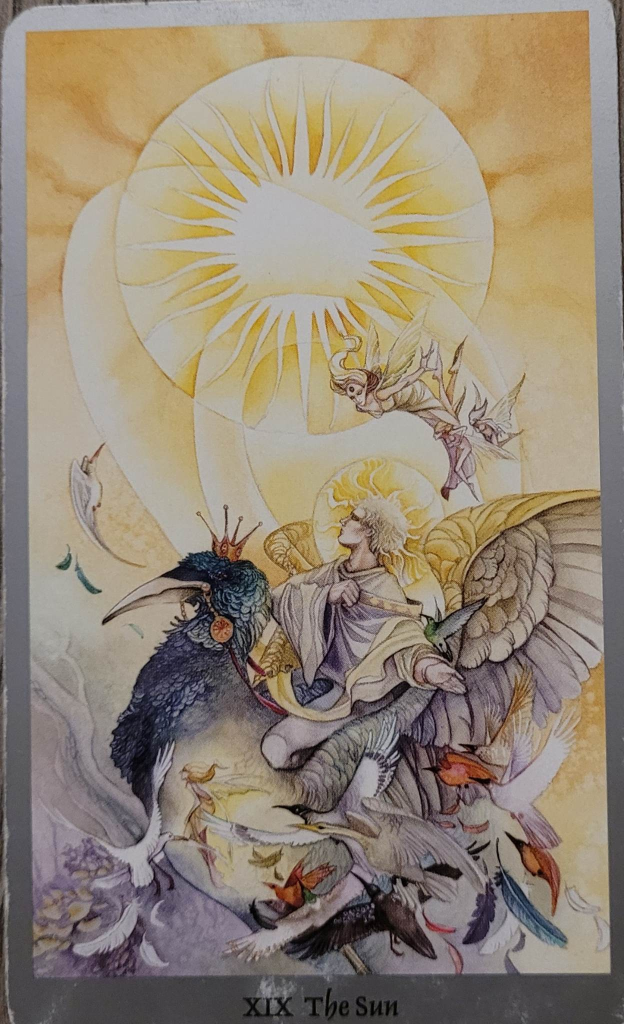
Eventually, the Fool emerges from his mental labyrinth to find himself facing the sunlight. All doubts have disappeared and only the joy and the assurance of being able to succeed remain. The sun represents happiness, success and excitement. It is the quintessential symbol of success.
Seeing the sun, the Fool knows that he is in a good position, that his abilities will be recognized and that in the end everything will be fine. He is confident that his efforts will bear fruit. Not only is he confident, but he also inspires trust and respect in others. Like the sun, the Fool has become this radiant person, who attracts others and with whom people like to maintain contact, because he in turn inspires them.
The sun also tells the Fool that his journey is nearing its end. He has almost arrived at the realization of his final goal and the assurance of its realization is brought to him. In fact, all he has to do is stay on the path he has taken, because this will inevitably lead him to success and joy.
20. The Judgement
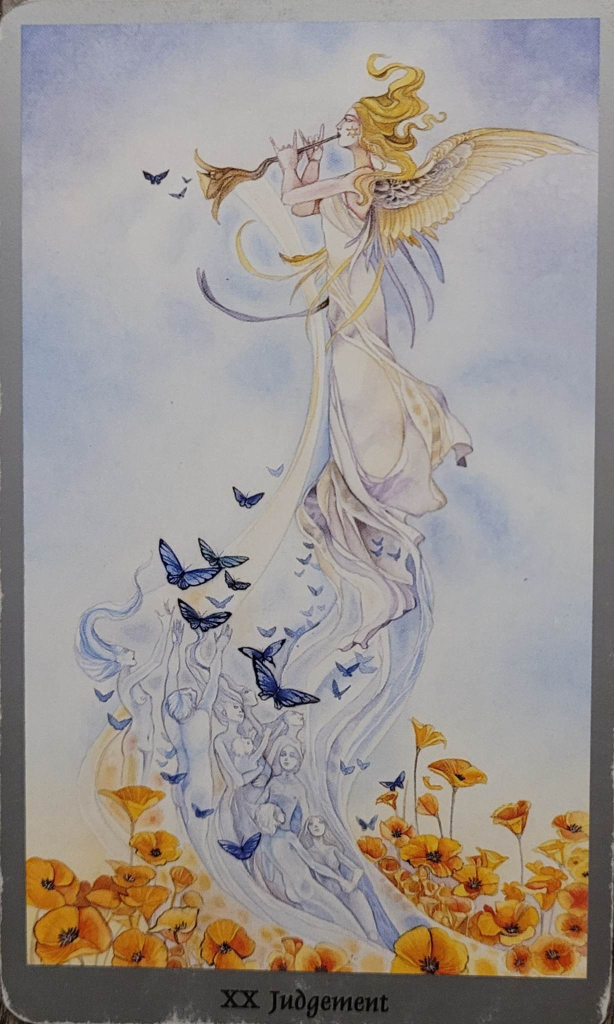
The Fool comes to the end of his journey and his success is finally recognized. He sees his projects succeed and faces a revival. However, all is not won. He still has a decision to make in the face of this renewal. Will he remain in his present ideal situation, or will he continue to yearn for more?
Judgment is a card that symbolizes success, but also an important decision. The Fool is called to judgment. What will he do? Will he continue his journey or will he choose to end his journey where he is?
It can sometimes be scary to be faced with a final decision when everything seems to be going well. However, it can often be the difference between success and even more advanced spiritual activation. It is at this point that the Fool must combine all of his learnings in order to arrive at an ultimate decision.
This decision is often not easy to make, as it requires a superior mastery of our desires, values and strengths, but as the fool is about to discover, this decision is usually worth the effort.
21. The World
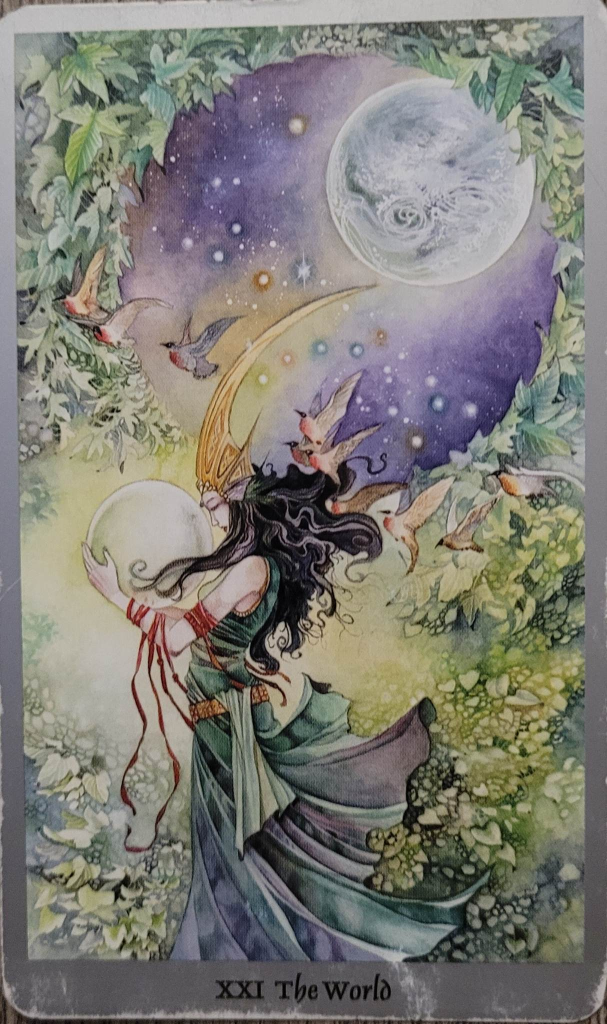
The world represents the final success of the Fool, but also all the possibilities that are always available to him. It is the ultimate fulfillment of his quest, but also the realization that there is still so much to learn and discover.
In the end, we will never have enough of a single life to live, see and evolve everything. However, that does not mean that we will never be happy. At the end of his journey, the Fool is satisfied and well in his accomplishments. But that does not prevent him from realizing all the possibilities that were once offered to him and those that are now offered to him.
By making the decision not to stop at a single success and not to stagnate eternally in an acquired comfort zone, the Fool begins a new adventure. Because such is the circle of life, nothing ever stops definitively and never a person will cease to be able to rise physically and spiritually and there is the beauty of the journey of the Fool. It is not a single quest, but a set of quests in perpetual continuity.
Conclusion
In conclusion, unraveling the mysteries of the major arcana of tarot may seem like an intimidating task, but fear not, dear reader! With a little patience, practice, and a touch of intuition, you can unlock the secrets of these powerful cards and tap into their wisdom.
Just like a magician with their bag of tricks, each major arcana card holds its unique allure and enchantment. From the mysterious High Priestess who guards the secrets of the subconscious, to the formidable Emperor who exudes authority and power, these cards are like characters in a grand cosmic drama, waiting to share their stories with you.
As you embark on your journey of tarot exploration, remember to trust your instincts and let your intuition be your guide. Tarot reading is not a precise science, but rather an art form that requires an open mind and a sense of curiosity. Don’t be afraid to infuse your own interpretations and insights into the cards, as they can reveal new layers of meaning and provide guidance that is uniquely tailored to you.
And remember, even the most seasoned tarot readers make mistakes! So don’t be too hard on yourself if you stumble along the way or draw a blank on a card’s meaning. After all, tarot is a journey of self-discovery, and sometimes the most valuable lessons come from the unexpected twists and turns.
